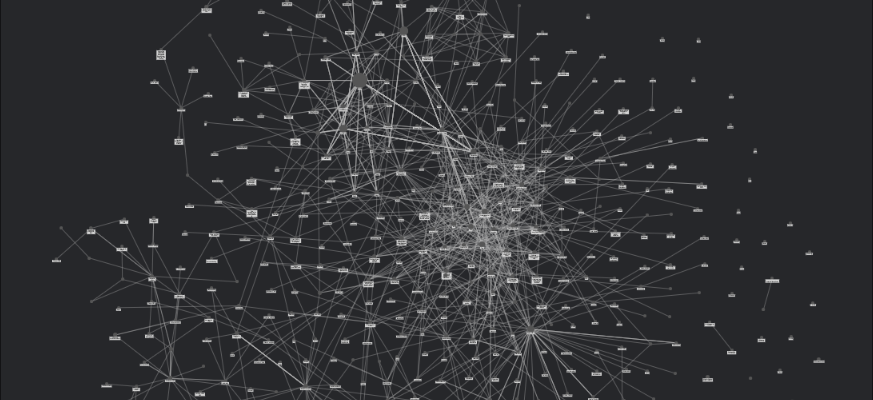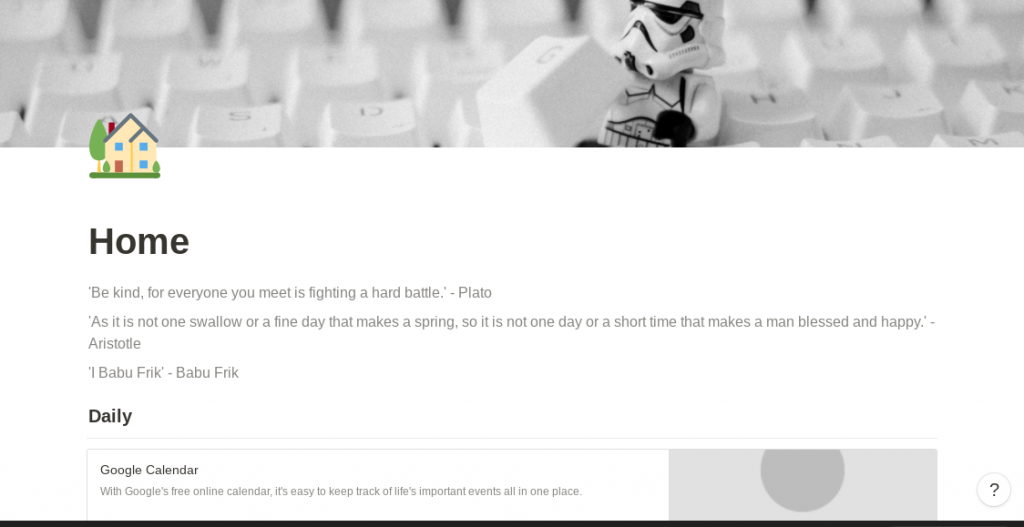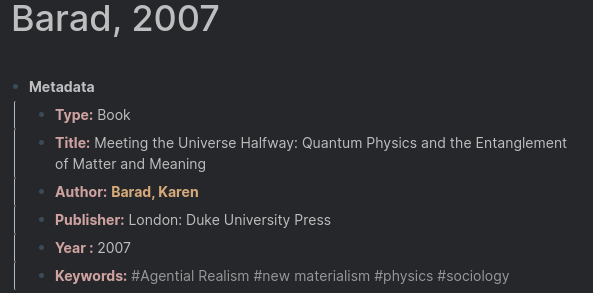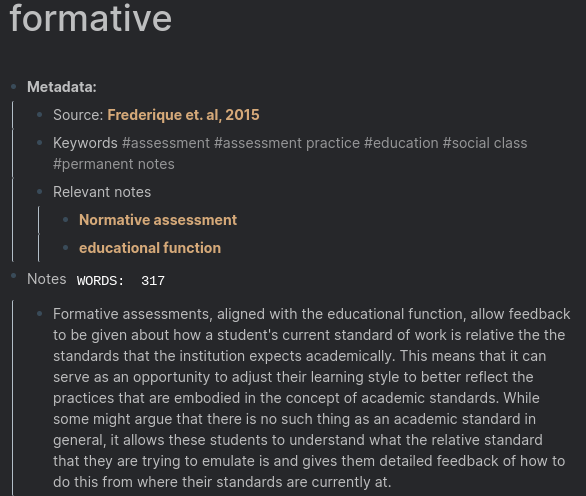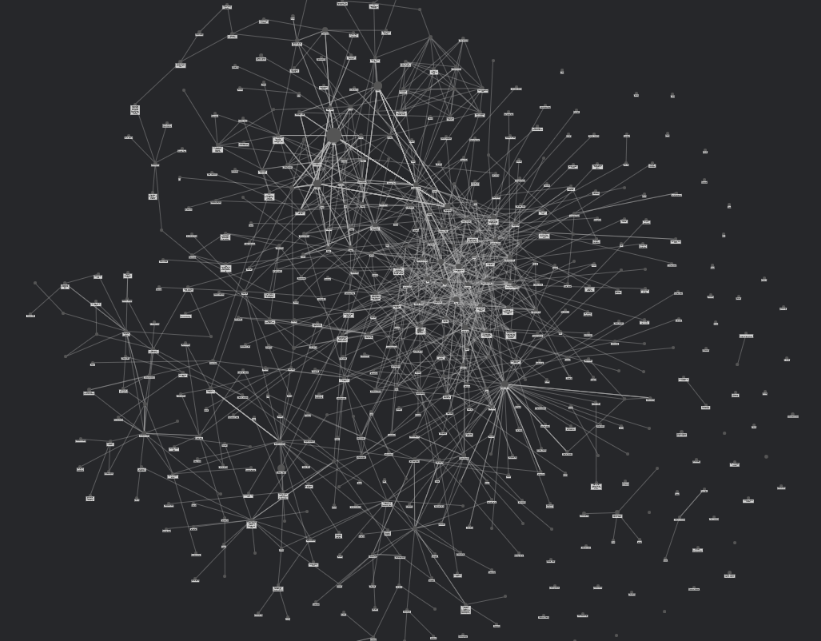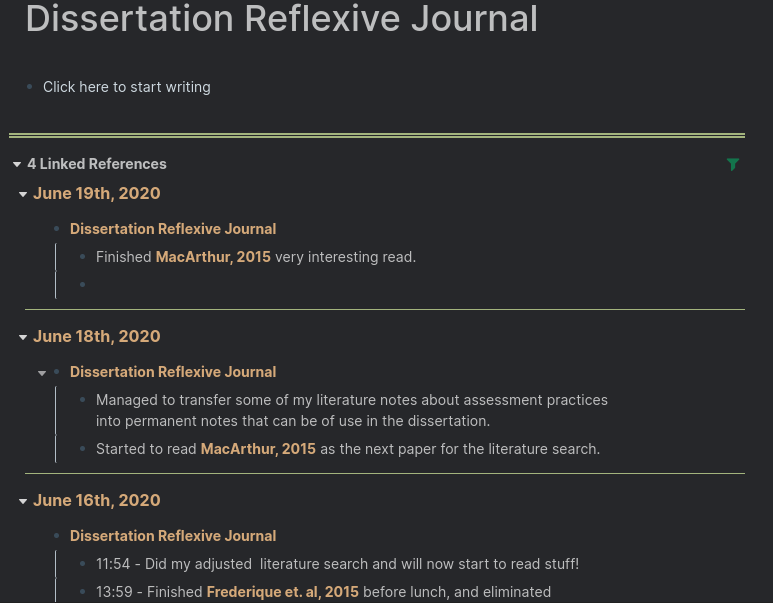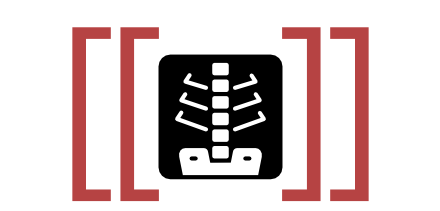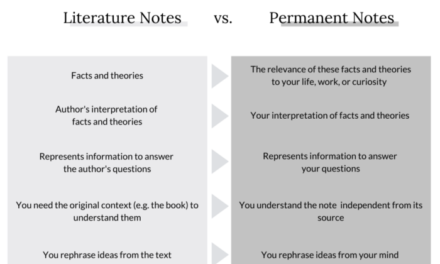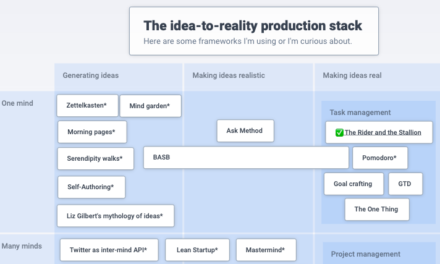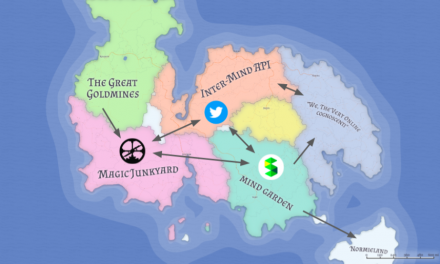(This post comes from an article originally published on Michael Malt-Cullen’s website.)
This article is a brief overview of how I use Roam Research to research for my dissertation. I start of with a bit of background about how I used to research. I then discuss recording my research notes and how Roam helps with serendipitous ideas. After this, I talk about recording the research process itself and how the daily note feature of Roam makes this quick and easy. Finally, I go over how I intend to use Roam and my notes to construct my dissertation once my literature search is done.
A practical background
I am currently a masters student studying Educational Studies in Adult, Youth, and Community Contexts at the University of Glasgow in Scotland. While this is a taught masters, the course does cover and requires research as part of its completion, specifically in the form of a research module and a dissertation which should involve using a particular research method.
As a result of the coronavirus epidemic, lockdown has meant that we are no longer allowed to use human participants in our research projects. Considering how important humans are to the practice of education, you might be able to see how this has complicated a lot of the research that many of us were planning to do.
This has led, in my cohort especially, to adopting research methods such as literature reviews, policy analysis, and secondary data analysis involving the use of statistical data, social media, and other sources.
Even before the lockdown had come into effect, I had planned on doing a literature review for my dissertation project as, in the periphery of my course reading and because of my working-class background, I noticed that there was a gap in the literature about what a working-class lived experience of education is generally, and more specifically what a working-class lived experience of assessment is in higher education. So, with my research, I want to find out whether there is a workable concept of working-class lived experience of assessment that can be studied and used to inform potential changes in assessment practice and greater institutional change.
Currently, this involves me doing an integrative review of the literature in this area, getting a good understanding of each side, and synthesising these sides to provide a new perspective using some literature from outside of the specified research area.
This meant taking a necessarily multi-disciplinary approach and perspective to the task of research which requires complex ways of connecting disparate ideas that may not be obviously connected on a first pass.
I initially started keeping my notes in a bullet journal system that I had created for myself, as it allowed me to consult an index at the front of my journal so I could easily track where my notes were. A few issues presented themselves with this research practice:
1) my handwriting is awful and sometimes I cannot read what I have written down;
2) due to the linearity of a journal, I had to flick backwards and forwards all the time to trace ideas which was inconvenient; and
3) the ideas and knowledge that I had written down were still siloed in an important way – they were individually separated in a way that meant there was no systematic way of connecting them via the ideas that were expressed by the texts or by myself in my authored notes.
I then chose to move my note-taking to a digital format, mainly so I could consistently read what I had written, but also in the hopes of addressing the issue of siloed ideas too. I used Evernote for a while which helped me create a structured hierarchy of the ideas that was helpful for a while as I could non-linearly group connected ideas and concepts. I eventually exported my Evernote database into Notion, as the idea of having a personal wiki was novel and the way that Notion did this seemed fun (and it was good procrastination).
I continued to build up my ideas in the same way as I had in Evernote, but then began to run into issues with notes that bridged conceptual spaces. As my understanding of the relevant literature areas has become more complex, so have the connections that I could see between them, especially concerning bridging the gap between assessment literature and working-class lived experience of higher education literature. As a result, these nested structures made it difficult represent these connections in the structure of my notes. It may well be the case, on reflection, that using something like linked relational databases may have served this purpose but I wasn’t sure how to go about doing this in a way that would have solved this issue at the time (nor would I be sure how to do it now).
In February, I ran into Roam Research and the Zettelkasten method of note-taking. Doing a bit of research on Zettelkasten, how it works, and how to do it, I instantly saw the value of Roam Research as a tool to connect ideas. It instantly presented itself as an easy solution to the problem of siloed ideas in nested structures – you could just type stuff into double square brackets ‘[[…]]’ to connect the idea that you were writing about to other established ideas or to signal ideas that you could later develop. However, as I had a lot of assignments on at the time, I didn’t take the time to develop a working system that naturally linked my notes to others which meant that I wasn’t connecting the ideas in a way that would produce serendipitous linking or easy topics to write about. So I went back to Notion for a bit, as it was easier at the time to use what I knew for the purposes of the work that I was doing at the time.
When lockdown was imposed in the UK, this gave me an opportunity to put some time into learning the Zettelkasten system properly, and create an easy way for me to implement it in Roam. Since then, Roam and the Zettelkasten method has significantly impacted how I approach the practices of literature research and idea synthesis.
Storing Research
I have started to use the Zettelkasten method in a fairly standard way to start to structure my note-taking and produce actual research at the same time. This ability to combine note-taking with the production of research is the great thing about Zettelkasten and it is enhanced by Roam’s ability to link notes bi-directionally with such ease. (I first saw a direct implementation of the Zettelkasten method in Roam on Shu Omi’s YouTube channel. The specific video is linked here.)
When I am reading a source, I have a metadata template for that source. This contains all fields that I would need to reference the article/book/chapter in an academic paper. I also include a field for keywords which I fill in while I read so that, when looking at the concepts involved in my research, I can see what sources talk about that concept. This is helpful for literature reviews in general, where you need to demonstrate an understanding of your topic generally by backing up your assertions about particular ideas with multiple authors.
I then take general literature notes that specifically relate to assessment practice or working-class lived experience of higher education and generally disregard any other points that the paper makes, unless I see them having some connection to the writing that I do. For example, while the material conditions of working-class life is not specifically about assessment practices or the lived experience of working-class students, it will relate to how I want to present the development of working-class learning identities and their relation to assessment practices. So, I will make a note of some more peripheral points that will bolster the argument I plan to build into my dissertation.
After taking these literature notes, I tend to go back the next morning (where I usually schedule a few hours of writing) and review them for relevance. I do this the next day as, if I review them on the same day, I am liable to view the majority of the literature notes as worthy of elaboration into permanent notes. I also think that having an evening away from the notes I have made enables me to process their importance in a less focused manner making the important points salient the next day.
For making permanent notes, I also have a template that I use which links the ideas back to the source, other ideas, and other relevant permanent notes. What this allows me to do is build a fairly sophisticated picture of the field that I am researching, as it traces relationships that are clear and traceable. However, it is when I am looking through these notes that the real value of these notes reveals itself as the transitive relationships between ideas become evident.
Transitive relations are usually expressed in the following format:
- A -> B
- B -> C
- Therefore, A -> C
It’s the discovery of the relationship between A and C in the graph overview of Roam that has led to useful insights for me as this is where you get to see the relationship between two seemingly disparate concepts, the nature of it, and what it is mediated by. There may be other serendipitous linkings happening as I am going through my notes, but this is definitely the one that occurs most often.
It is using these A->C links that allow me to build an account of and argument for a specific lived experience of assessment that is had by working-class students in higher education. Importantly for an integrative review, this is where the synthesis of a new perspective happens. Working with Roam Research and the Zettelkasten method has given me a system to work in which generates these realisations as a passive result of how I am keeping notes.
Recording Research
In social science research, there are a huge number of methods and methodologies to use to conduct research on a given topic. When presenting the results of that research, we need to transparently present how the research was conducted and provide justifications for the methods we use and the other choices we make. Something that I have found useful to ensure all this happens in my research is to keep a reflexive research journal which documents all the work I do in a day that relates to my dissertation.
Creating a research journal has been especially easy in Roam Research. I have a page that is my research journal and I link to it from the daily note that Roam auto-generates everyday. I would ideally like to keep a time log of everything that I do to progress my research but often this doesn’t happen. Instead I will link to my journal and write out my account of what I did for the day and why I did it. This way I can record both the process of the research and my justifications for the decisions I make.
One area that this has been useful for is justifying the exclusion of particular sources from my literature search. As with all other literature reviews, I have specific criteria that I use to exclude some sources and include others. For example, I will write in my journal that I have decided to exclude one particular sources as it talks about working-class lived experience of high school, as opposed to higher education which is the context I am focusing on.
Writing Research
As of right now, I have not started to compile my notes into a linear dissertation piece. This is because I am still conducting my literature search (and probably will be for another week or so). However, it should be clear how the production of permanent notes as I read will make things easier in this regard.
When I start to approach the writing of the dissertation proper, I will not be confronted with a blank page but a list of conceptually-related, fleshed-out ideas that I will be able to use as the main body of the dissertation and then begin to edit and fill in gaps in the argument as necessary. Tracking the research journey in Roam has allowed me to build up a resource that will form the bulk of my methodology chapter also.
Conclusion
Overall, Roam Research has been extremely helpful in giving me a straightforward way of conceptualising the field of my research topic as well as supporting a note-taking method which allows me to build my dissertation topic from the research itself, rather than choosing a topic and doing the research after that.
It has allowed me, as a researcher, to easily navigate the non-linear process of research rather than attempting to fit it into a nested, linear hierarchy. Now, if only research papers could be published in Roam Research, that would be great!

